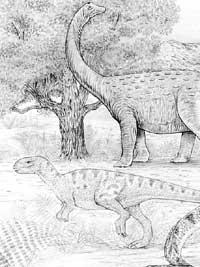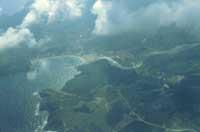Recent searches
1995/09/01 Astibia, Humberto | Nuñez-Betelu, Koldo Iturria: Elhuyar aldizkaria
In recent years people often show great interest in Paleontology, although dinosaurs are the ones that have achieved the most fame. Despite the destruction of these reptiles about 65 million years ago, literature, cinema, exhibitions and the media have risen and brought us back. Many children today know by heart the genera and species of dinosaurs, as well as their main characteristics and acquire them if they still remain alive. Moreover, the popularization of Paleontology has led to the creation of numerous popular societies and paleontological groups, as well as fairs and fossil sales.
But in this world it is easy to put a price on anything, although it is often taken into account its real value or not known. There is nothing free of trade, neither geological nor paleontological elements. The sale of fossils has become widespread and the most precious and unique fossils can now be acquired. This trade, which covers legal and illegal routes, including pirate excavations, has become equivalent to “ivory smuggling” in countries such as Mongolia, China or the United States. Here, for example, a couple of items that are on sale in an American catalog:
a/ Embryonic egg: Embryo analyzed by CATT, unique specimen in the world of the Cretaceous Period; Ref. 91; Price: US$1.6 million (40 million pounds, 200 million pesos)
b/ Prehistoric bat of the lower Eocene in the rock. 55 million old years, only five specimens have been found in the world, the second and the oldest found in quality, 10 cm long, Ref. 118; Price: US $77,000 (10 million pesetas. 400,000 pounds).
The same catalog offers dinosaur nests with eggs, dinosaur skeletons and bird fossils, mammals and many other creatures, as well as Martitz meteorites.
Unfortunately, geological and paleontological records are unique and unrepeatable. This is part of the importance of fossils. Fossils cannot be manufactured or manufactured and have come into our hands after millions of years. If we do not care for them, they will disappear forever, losing much information. The history of our planet is written on rocks, fossils, as well as current living beings. On the contrary, their reading is not easy. The paleontological study consists of proposing hypotheses and establishing theories about what was seen through the knowledge and prejudices of the time.
Fossils, in the style of archaeological grains, isolated outside their context, lose much of their scientific value and often become simple ornaments. Before inducing the fossil, it is necessary to specify its stratigraphic position, position, orientation within the rock, relationship and association with other fossils or many other tafonomic characteristics, otherwise the information of great value, the most useful and almost unique for many fossils, is lost forever. Therefore, the paleontological and geological and archaeological records are written in key and as they are “read” and “manipulated” they are greatly altered.
Unfortunately, paleontological and geological records are constantly attacked. Many public works, various industrial activities and the fossil trade often destroy or privatize the only common heritage. Therefore, it is necessary to become fully aware of the unrepeatable character of the fossil record and, consequently, to act consistently takes on great importance. Unfortunately, it is often not fulfilled, either in certain scientific environments or in institutions with educational and legislative instruments. The education of our institutions and media is a task of all scientists so that the paleontological heritage, of all, receives the necessary support. So be it.

Gai honi buruzko eduki gehiago
Elhuyarrek garatutako teknologia





